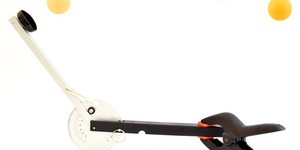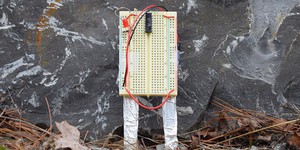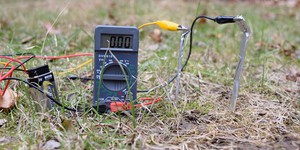Lesson Plans (14 results)
|
Select a resource
Sort by
|
Lesson Plan
Grade: 8th-12th
2 reviews
In this STEM lesson, students will build a mini popsicle stick drone and use feedback control with an Arduino and an ultrasonic sensor to control the drone's altitude.
Read more
Lesson Plan
Grade: 6th-8th
1 review
Learn about potential and kinetic energy the fun way—by launching ping pong balls across the classroom with a catapult!
Read more
NGSS Performance Expectations:
Featured
Lesson Plan
Grade: 4th-12th
2 reviews
Students will explore the elements by designing a wind maze, a device that can direct the wind along a specific path.
Learning Objectives
Students will:
Design and test a wind maze.
Consider how to direct the wind down an intended path by creating bends in the maze.
Use observations from their tests to compare solutions and iterate on their designs.
NGSS Alignment
This lesson helps students prepare for these Next Generation Science Standards Performance Expectations:
…
Read more
Lesson Plan
Grade: 9th-12th
2 reviews
You might have read about the negative impacts modern human civilization has had on the environment, like pollution, deforestation, and extinction of animal species. How can we use modern technology to help protect the environment? In this project-based lesson students will design an electronic circuit that can measure something in the environment like water quality and light pollution, and develop a plan for how their circuits could be used to solve a real-world problem.
Read more
NGSS Performance Expectations:
Lesson Plan
Grade: 6th-8th
Does human activity impact the environment? If so, how can we measure our impact on the environment? How can we use these measurements to change our behavior? In this project, your students will explore these questions by designing and building an electronic circuit that can measure environmental parameters like water quality or light pollution.
Read more
NGSS Performance Expectations:
|










